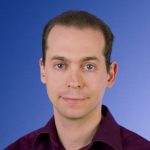
Daniel Bor
University of CambridgeAbout Me
I am a neuroscientist based at the University of Cambridge. I received my BA in psychology and philosophy from Balliol College, Oxford University, in 1997, and my PhD in cognitive neuroscience from St. John’s College, Cambridge University in 2002. I have published research in various fields, including how the brain processes consciousness, attention, memory and intelligence, and the extent that mental training can boost cognitive performance, or even change how we perceive the world. I am the author of a general audience book on consciousness science, The Ravenous Brain, which was chosen as a best book of 2012 in the Wall Street Journal, the Book of the Week at the Times Higher Education magazine, and the September main selection at Scientific American Book Club. I also co-wrote the introductory popular science book, 30 Second Brain. I have written articles on neuroscience and psychology for various popular magazines, including Scientific American Mind, New Scientist, Slate and Wired UK. I have also appeared on various radio shows, to talk about neuroscience, and have given many public talks, including at the London Science Museum, and the Royal Institution.
Visit me: www.danielbor.com
My Research
My main research focus right now is on the effects of drowsiness and conscious level (both measured neurally) on cognition, and how this is modulated by age and disease (Alzheimer's disease, especially). Linking these fields together, I am currently funded by a Wellcome Trust grant to find the neural basis of cognitive reserve, which is our ability to maintain cognitive function when neurally strained, for instance due to Alzheimer's disease brain damage. One endpoint of this research is to discover ways to boost cognitive reserve in dementia and other populations.
Other research areas I study include synaesthesia, neurofeedback, working memory, attention, intelligence, strategic processing and chunking in the normal population, as well as those with focal brain damage, those on the autistic spectrum and savants.
I have used cognitive training, both as an experimental tool to simulate synaesthesia in those without this condition, and as a potentially clinical tool, to raise cognition, either in the normal population, or to halt cognitive decline in Alzheimer's disease.
In all these research areas I employ a range of neuroimaging techniques, including fMRI, MEG, EEG, PET and TMS.
Capeia Articles
Selected Publications
Bor D, Rothen N, Schwartzman DJ, Clayton S, and Seth AK (2014). Adults Can Be Trained to Acquire Synesthetic Experiences Scientific Reports 4; 7089.
Bor D and Seth AK (2012) Consciousness and the prefrontal parietal network: Insights from attention, working memory and chunking Frontiers in Psychology 3: 63.
Bor D, Billington J, and Baron-Cohen S (2008) Savant memory for digits in a case of synaesthesia and Asperger Syndrome is related to hyperactivity in the lateral prefrontal cortex Neurocase 13: 311-319.
Bor D and Owen AM (2007) A Common Prefrontal-Parietal Network for Mnemonic and Mathematical Recoding Strategies within Working Memory Cerebral Cortex 17: 778-786.
Bor D, Duncan J, and Owen AM (2003) Encoding strategies dissociate prefrontal activity from working memory demand Neuron 37: 361-367.
Duncan J, Seitz RJ, Kolodny J, Bor D, Herzog H, Ahmed A, Newell FN, and Emslie H (2000) A neural basis for general intelligence Science 289: 457-60.
Recommended Reads
Bor D (2012) The Ravenous Brain: How the New Science of Consciousness Explains Our Insatiable Search for Meaning Basic Books
Seth AK (edited) (2014) 30-Second Brain: The 50 Most Mind-blowing Ideas in Neuroscience, Each Explained in Half a Minute Icon Books
Frith C (2007) Making Up the Mind: How the Brain Creates Our Mental World Wiley-Blackwell
Tegmark M (2015) Our Mathematical Universe: My Quest for the Ultimate Nature of Reality Penguin Random House